by Kristian Black | Sep 13, 2018
June 2018
“Kris-Ti-An, what’s this JerkXJollof thing you do? I see fancy pictures of you guys and cool graphics; do you think you can make Twitter graphics of professors presenting at my D.U.S.T. symposium in August? If so, this will be your first job in our lab!” said Dr. Ghani.
And like that, I had made it to the big leagues. This was my first job as a newly minted researcher and student in the Master of Science in Clinical Research program. Not quite what I expected when I joined the team but hey, we all having a starting point! I could tell my future as the lab’s go-to graphic designer depended on this, so I worked tirelessly to produce a product even Donald Trump couldn’t refute as fake news. Now you may be wondering, like I at the time, what is D.U.S.T. and how does it relate to Urology?
D.U.S.T. (Developments in Ureteroscopic Stone Treatment) is an annual endourology symposium led by Michigan Medicine faculty Dr. Khurshid Ghani (director) and Dr. William Roberts (co-director). Each year at D.U.S.T., world renowned urologists are invited to give talks and demonstrations on the latest techniques in the field. What started four years ago in Ann Arbor as a small meeting composed mostly of residents has now expanded to a robust symposium nestled in the heart of Chicago attracting community urologists and major academic players alike.
August 16, 2018
The day had come at last. As I sat through grand rounds listening to Dr. Mahesh Desai, who had flown from India to present at the symposium, speckles of dust twinkled in my head. While I knew very little about percutaneous nephrolithotomy, Dr. Desai’s pride and joy, I knew that in a few hours I would be on my way to the beautiful city of Chicago for a well-needed change of scenery where my Twitter artwork would be on display for the masses. Like I said, the big leagues! After grand rounds had finished, my lab mate Ali Aldouhki and I heard a familiar British accent call out to us saying, “Kris-Ti-An, Ahh-Lee—you boys ready?” This was the beginning of a tiring but very rewarding weekend.

Ali and I assist Dr. Matthew Bultitude with his presentation during conference registration.
I had volunteered to drive Ali to Chicago, which hadn’t seemed like a problem until I remembered something very important: I’m addicted to trap (a subset genre of rap) music. While Ali was a cool guy, most of time we had ever spent together involved shooting lasers at fake kidney stones (aka our research) and there was definitely no music involved. But crossing cultural boundaries is sorta my thing, so I figured it would be okay. We jammed out to Lil Baby, Travis Scott, Gucci Mane and a smidgen of Drake before I handed him the aux cord. After some relaxing traditional Arabic music, we switched it up and bumped some original rap straight from his home Saudi Arabia. The trip was off to a lit start.
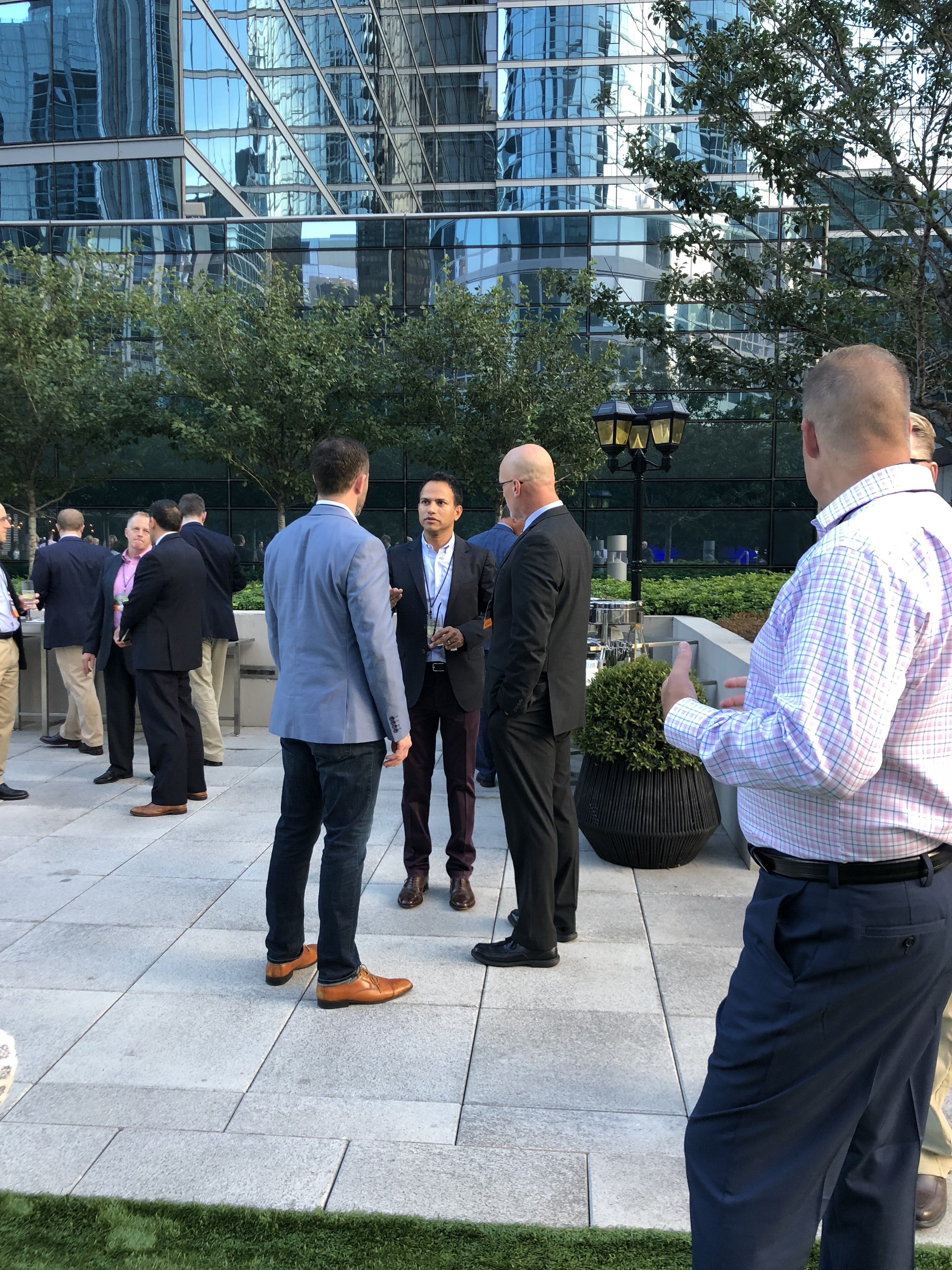
Dr. Khurshid Ghani greets guests at the opening reception of D.U.S.T. 2018.
After arriving, I was introduced the conference coordinator Christina who I had been anonymously chatting with for two months. We hit it off by bonding over the Dr. Ghani quirks that you only understand after rehashing a graphic design for him 100 times until it’s perfect. I knew at that moment if the conference was anything reminiscent of that process, I was in for quite the show. As we walked around setting up I was blown away by the quality of the signs, brochures, visual media and overall aesthetic Christina had created for the conference. To top it off, the graphics that I had toiled over were displayed as brilliant 3’x5’ posters adorning the entrances. Mama, I made. My expectations for a beautiful weekend were confirmed that evening at the opening guest reception. As I stood sipping Pinot Grigio and nodding at the sunset from the rooftop terrace overlooking the Chicago River, I knew the hustle was worth it.

Rooftop terrace views at the Loews Hotel.
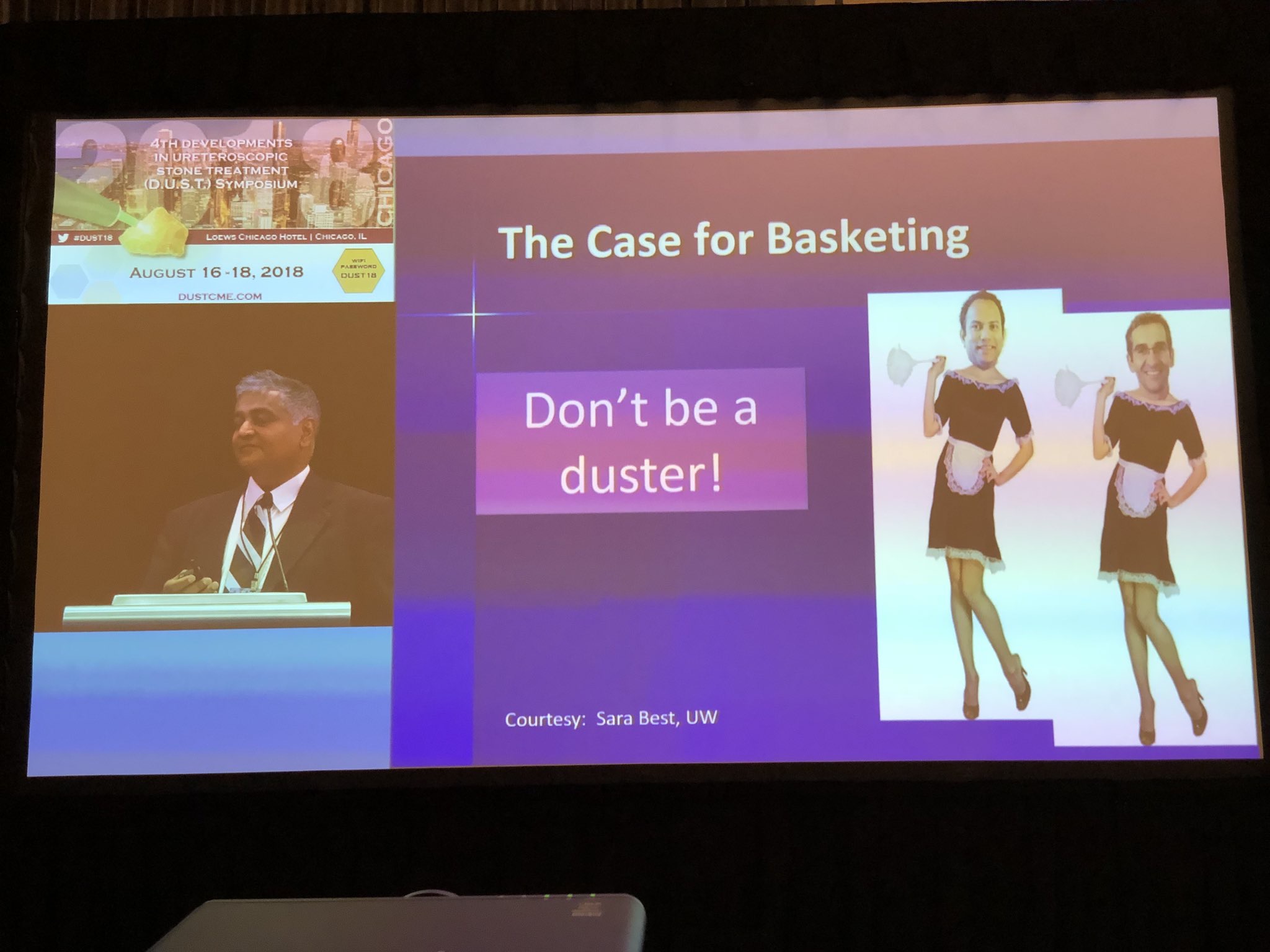
Dr. Manoj Monga takes visual puns to a new level.
The opening of the conference began with Dr. Ghani standing on stage in front of a roaring, introduction video, similar to how Steve Jobs would introduce an Apple event. And like an Apple product, this conference was sleek, flashy, and wrapped in an intelligent design. While Ali and I ran the mics, cued up presentations, and ran the Twitter wall, participants witnessed a seamless Broadway level production on the latest opinions in endourology. Talks were bursting with cutting edge techniques from world class faculty, an industry sponsored skills lab demoed the latest in laser technology, all while the Loews’s hotel staff supplied a constant assortment of grade A food and beverages. And while I’m sure the participants enjoyed the all the educational aspects of the conference, they had no choice but to be inundated with laughter after Dr. Ghani’s colleagues managed to sneak in a few Photoshopped pictures of him in various costumes in their final talks.
At the end of the tiring weekend Dr. Ghani asked, “Well Kris-Ti-An, what did you think?” While, I admitted the conference was an amazing success because of the brilliant minds that worked diligently to make it so… HONESTLY, I couldn’t help but to think: Would D.U.S.T. have been a Bust without my Twitter graphics?
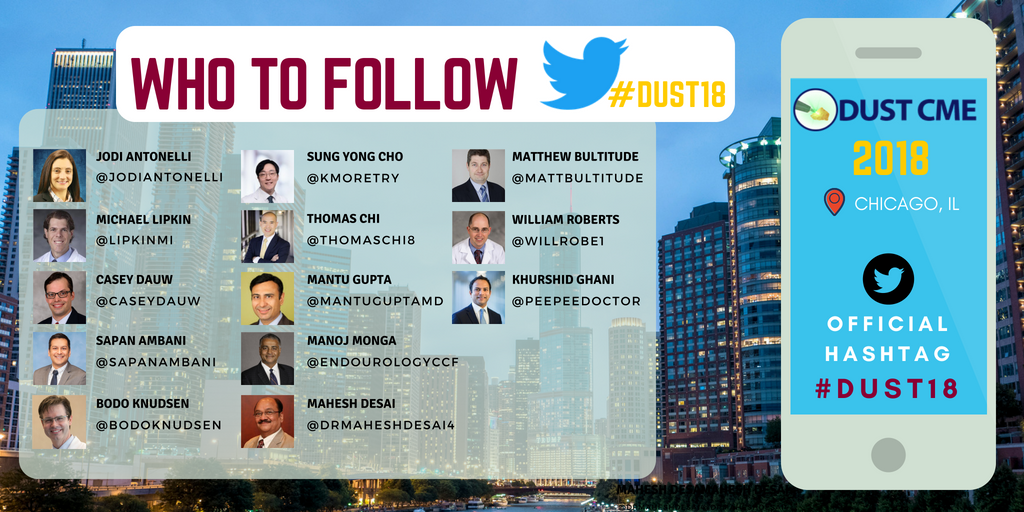
Graphic displaying Twitter handles of speakers at 2018 D.U.S.T. Symposium.
Kristian Black is a fourth-year medical student at University of Michigan Medical School. Hailing from Louisiana, he enjoys LSU football and all-you-can-eat crawfish. He can be followed on Instagram and twitter at @indiana_black.
by Kristian Black | Jan 12, 2017
What if I told you there was life outside medicine? Cheesy, I know, but I’d like you to take a second to imagine the possibilities that await you when you attend a university such as Michigan—one that fosters exploration of all your talents. Well, if your imagination is still dulled from overindulgence this holiday season, I’ll try to paint a vivid, tropical picture for you.
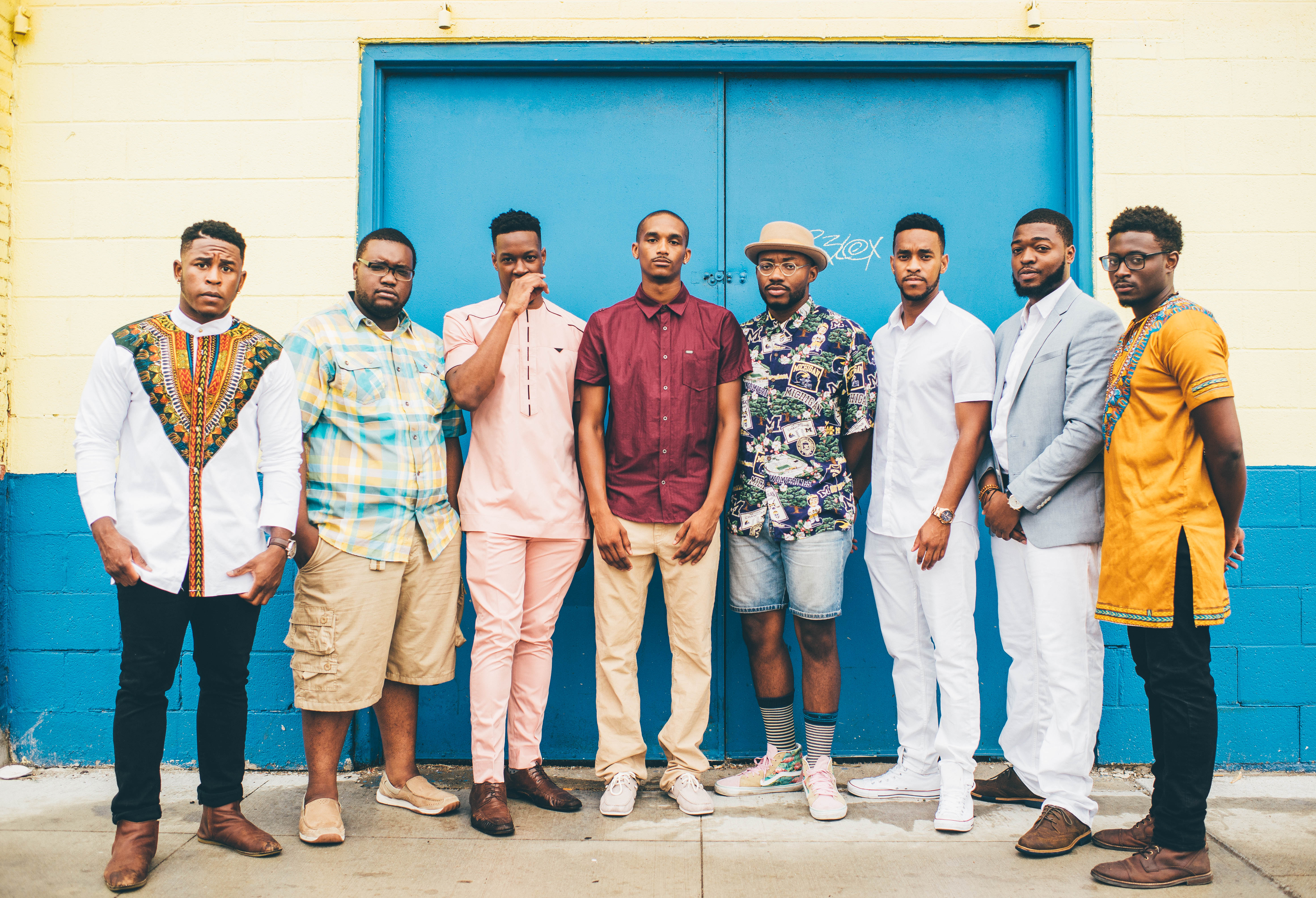
The JerkxJollof team is a diverse group of past and present University of Michigan students with (or earning) degrees in medicine, engineering, social work and music.
Though romantic, I sought to examine this problem similarly to how we are taught medicine: holistically and sometimes seemingly paradoxically. But like any medication hoping to breach the market, this theory had to be explored before being put into practice. Michigan’s flextime quizzing gave me the opportunity I needed by allowing me additional time to frequent Toronto, a flourishing, unapologetically diverse international city that nurtured the concept of promoting diversity through celebration.
Realizing the need for such untraveled avenues, my friends and I set out to address the theme of celebration by creating a space where individuals could rejoice and learn about rich African and Caribbean culture. Borrowing the name from a past graduation event, JerkXJollof (pronounced Jerk and Jollof) was born. The name embodies both the Caribbean and African diaspora respectively through two native dishes: Jerk, a fiery Jamaican cooking style, and Jollof, a spicy West African rice dish. Through Soca/Afrobeat-themed parties we call “experiences,” we pride ourselves in sparking discourse with culture, cuisine and nightlife.
These community outreach initiatives are just one of the many endeavors I’ve been able and encouraged to pursue far outside the boundaries of traditional medicine. I can confidently say that here at Michigan, we’re not just cultivating doctors, but nurturing people because we are encouraged to explore the fringes of our curiosity and passions alike. It is these experiences and adventures trailing humanity, independent of the hospital, that often guides and provides the inspiration required to solve complex medical anomalies. Just like healing is more than physical, and life is busier than a single lane highway, there is more life outside medicine.
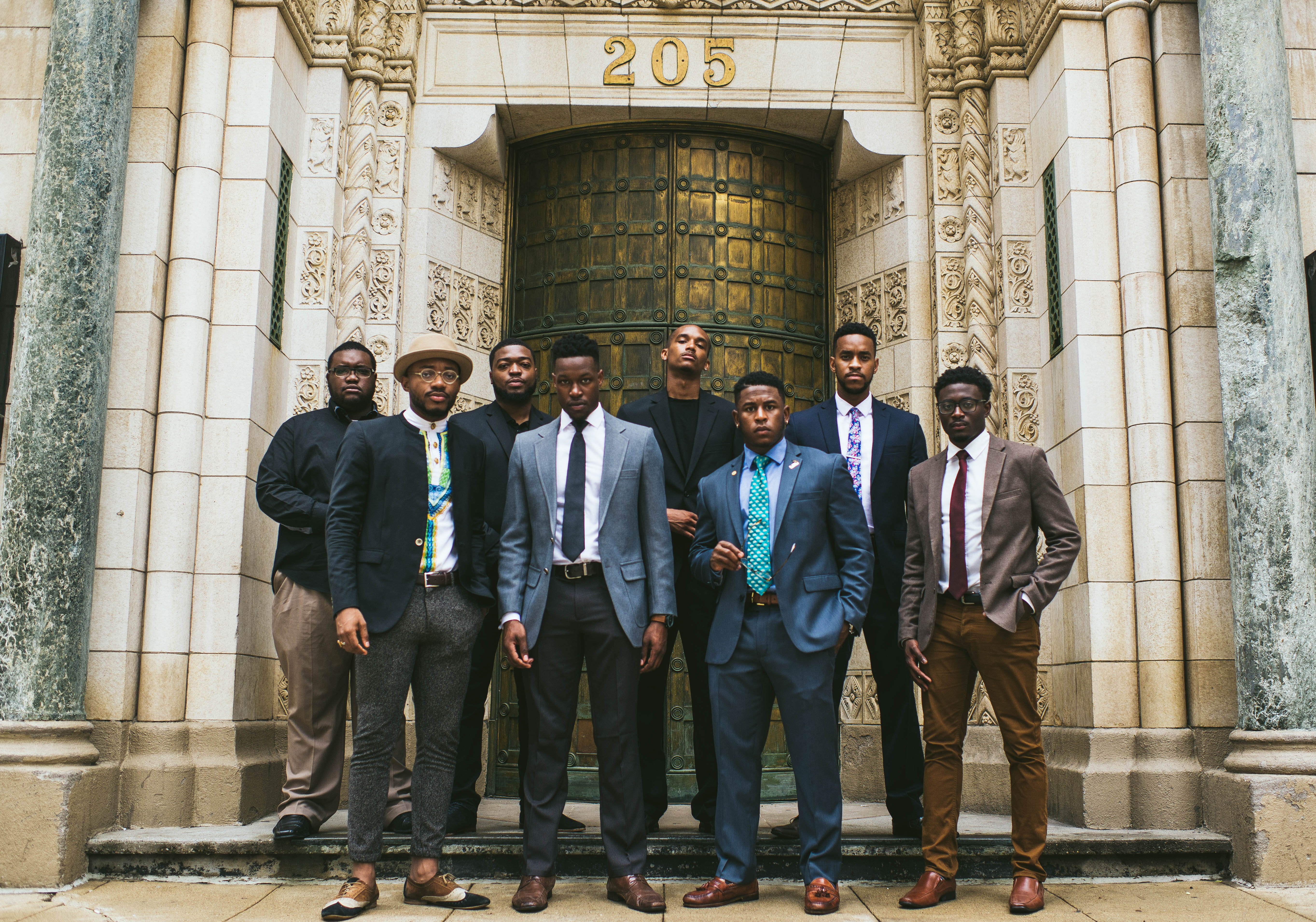
The team standing in the heart of downtown Detroit in business wear depicting the dichotomy between work and play.
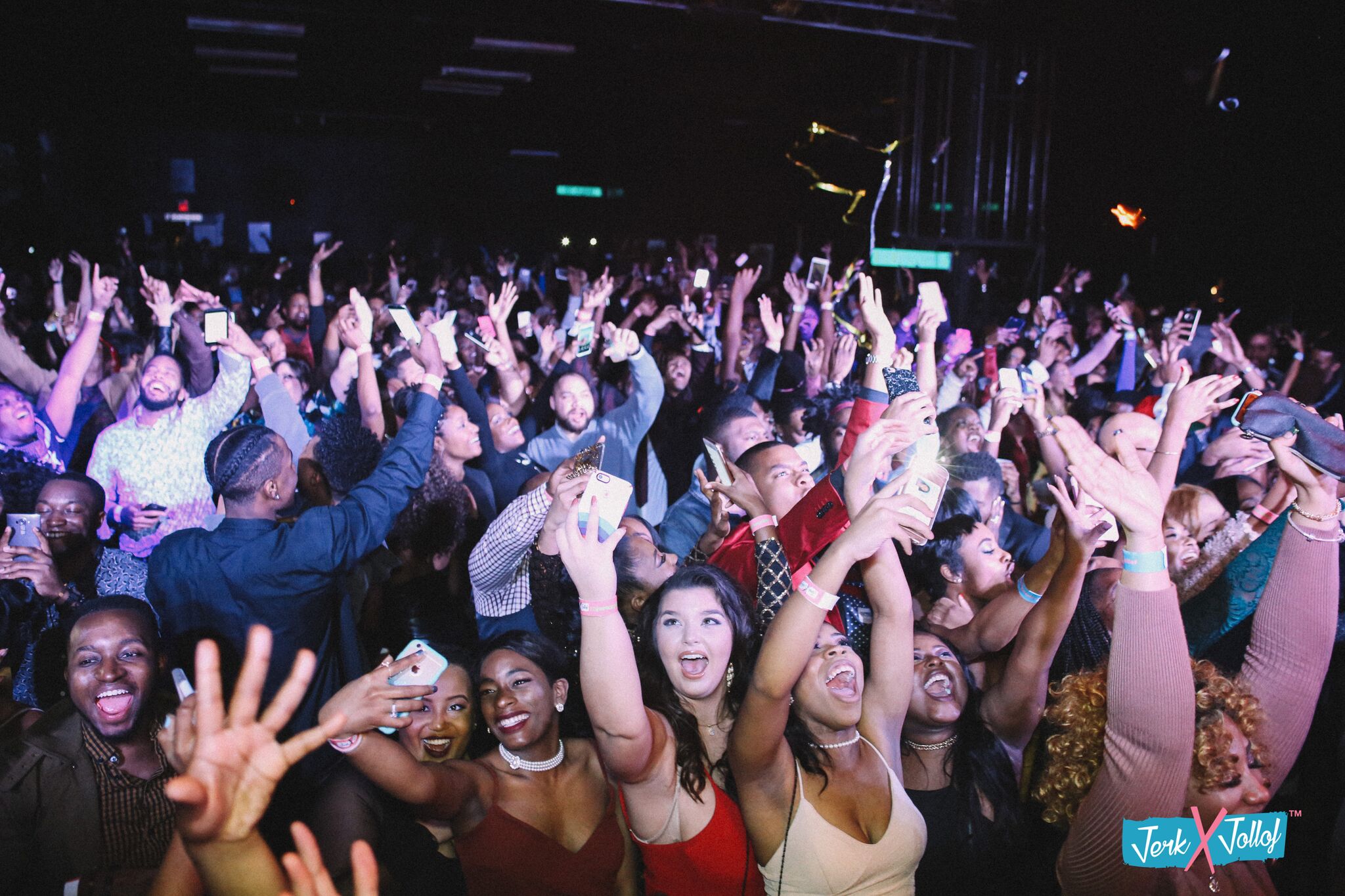
Attracting more than 800 people, New Year’s Eve proved to be the largest experience yet. This stage view captures the crowd’s excitement as patrons anticipate the midnight countdown.

Happy New Year! A team of drummers is seen playing traditional African beats at the stroke of midnight.

JxJ rule number one: come as you are. While some patrons wear traditional outfits, others prefer a more casual look.

Guests are encouraged to bring flags, like the Ghanaian one pictured above, to represent the wide array of ethnic and cultural identities present at the event.
Kristian Black is a fourth-year medical student at University of Michigan Medical School. Hailing from Louisiana, he enjoys LSU football and all-you-can-eat crawfish. He can be followed on Instagram and twitter at @indiana_black.
by Kristian Black | Oct 6, 2016
The first step in addressing health disparities in minority communities is acknowledging they exist, but we can only expect to see significant progress when the physician workforce demographics matches that of the population it serves. We have to increase minority presence in healthcare, but how?
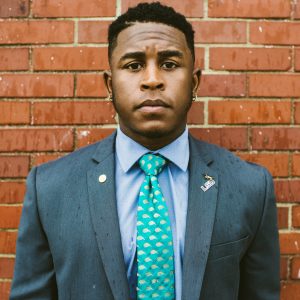
“I’m no art buff, wine connoisseur, or genius; just fortunate, tenacious and a bit lucky.”
There are many barriers that block minority students from pursuing careers in health related fields spurring from lack of resources to the total absence of knowledge on the process of becoming a physician, but in my opinion, two of the biggest minority deterrents are the lack of representation and the social expectations of how a physician should look and act.
To unpack that last statement, many individuals of minority status are intimidated by the expectations that are synonymous with increased socioeconomic mobility of physicians; like the understanding of “highbrow” culture, politics, fine art, exotic cuisine—all of which usually require a certain level of status to interact with. In short, social constructs convince them that they aren’t polished enough for such a career.
I’m no art buff, wine connoisseur, or genius; just fortunate, tenacious and a bit lucky. To present myself as an example that any minority that “tries hard” can become a doctor is deceptive, and undermines the complexity of representation in medicine. And for that very reason I try to use social media to portray the many dynamic attributes that can comprise a future physician. Whether that means taking over the Umich Snapchat account on the behalf of the medical school, or rapping the lyrics to my favorite Curren$y song on Twitter. I want onlookers to realize that choosing a career in medicine shouldn’t depend on where you come from, your dialect, style of dress or customs—but whether or not you are committed and willing to serve mankind to the best of your ability.
So how am I hoping to influence the demographics of medicine? Using my social platform as a method of recruitment, all while challenging the status quo and revealing the new physician.
Kristian Black is a fourth-year medical student at University of Michigan Medical School. Hailing from Louisiana, he enjoys LSU football and all-you-can-eat crawfish. He can be followed on Instagram and twitter at @indiana_black.












